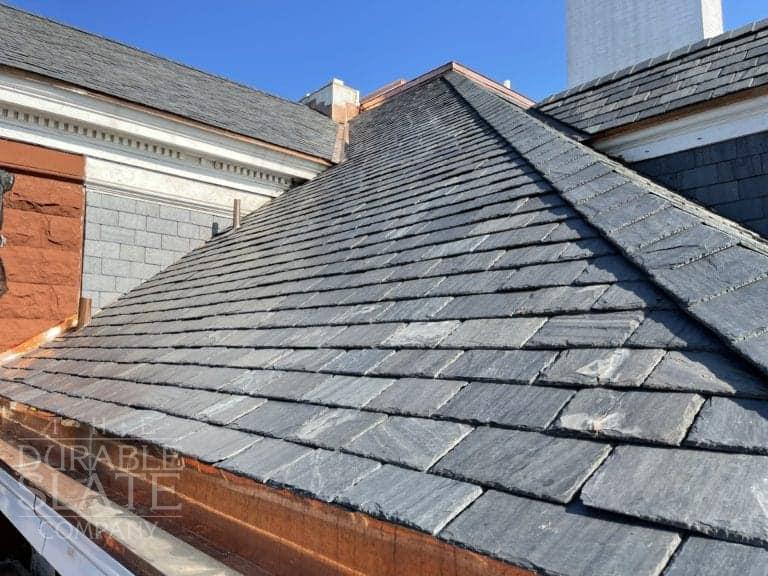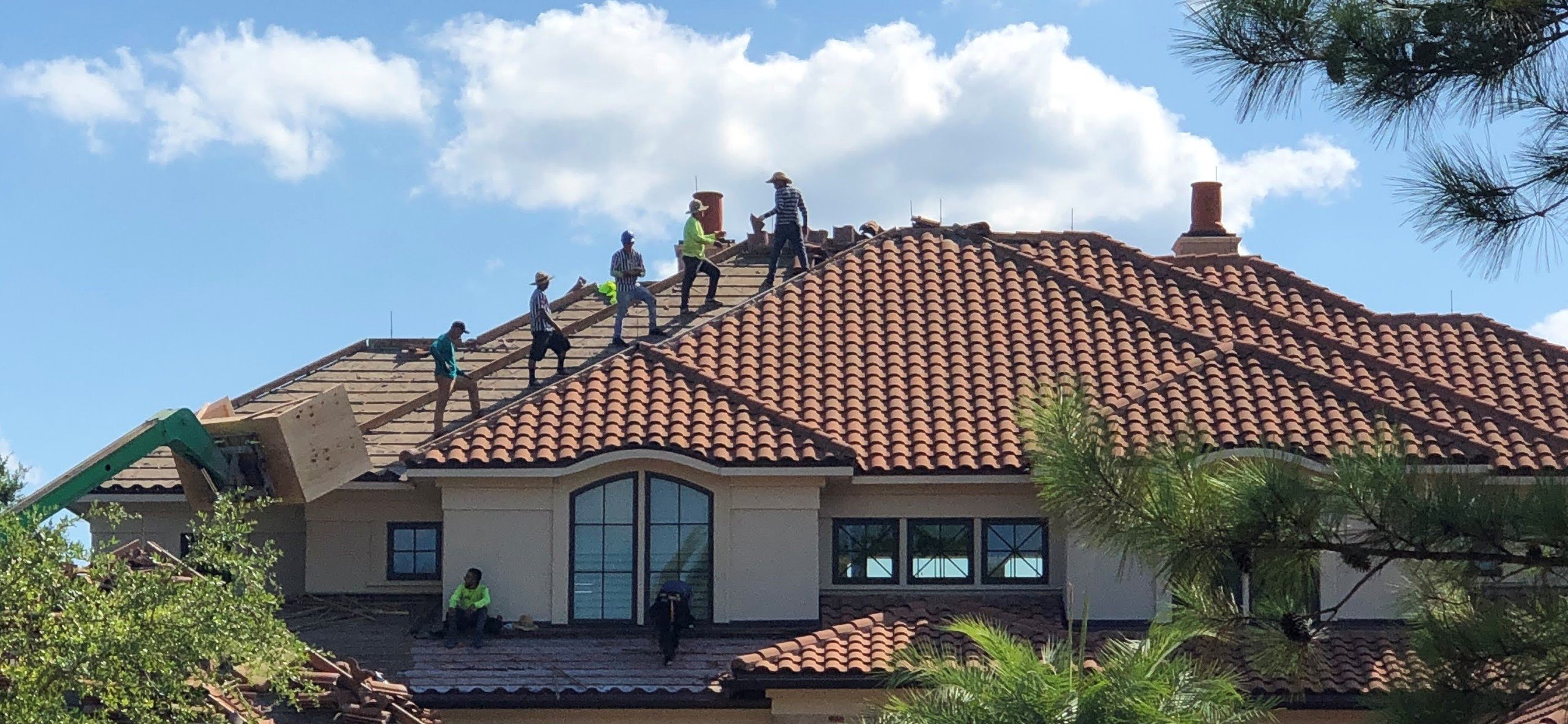The Benefits of Collaborating With Gainesville FL Roofing Companies
The Benefits of Collaborating With Gainesville FL Roofing Companies
Blog Article
Finest Practices for Ensuring Proper Roof Covering Ventilation
Guaranteeing appropriate roof covering air flow is vital for the longevity and effectiveness of a roof system. A well balanced intake and exhaust air vent ratio, frequently 1:300, plays a crucial function, with intake vents preferably positioned at the lower edge of the roofing for great air entry and exhaust vents at the top for warm air exit. Routine assessments to determine clogs and maintain clear airflow are extremely important. Maintaining insulation away from vents is important to prevent air flow restriction. Understanding these fundamental elements sets the stage for even more detailed understandings right into installation and upkeep techniques that can considerably boost your roof covering system's efficiency.
Understand Ventilation Basics
Correctly recognizing ventilation basics is vital for making certain the longevity and performance of roofing systems. Effective ventilation minimizes dampness accumulation and temperature extremes in the attic, both of which can result in significant architectural damages with time. A well-ventilated roofing system helps in avoiding typical issues such as mold and mildew development, timber rot, and ice dams, which can endanger the integrity of the roof materials and the underlying structures.
The primary goal of air flow is to assist in the motion of air, permitting a constant exchange in between the outside and indoor environments. This balance is achieved via a mix of consumption and exhaust vents that function with each other to preserve ideal airflow. Intake vents, commonly situated along the eaves or soffits, allow fresh air to get in the attic room area, while exhaust vents, typically positioned at or near the roofing ridge, allow hot, moist air to leave.
Key variables affecting the efficiency of roofing system air flow consist of appropriate positioning, ample sizing, and making certain that both consumption and exhaust vents are unobstructed. Normal assessment and upkeep are crucial to determine prospective blockages, damage, or ineffectiveness in the ventilation system, consequently guarding the roof covering's efficiency and toughness.
Types of Roofing Vents
Roof covering vents play an important function in maintaining reliable attic room air flow and, by extension, the general wellness of the roof. Numerous sorts of roof covering vents are offered, each with unique benefits tailored to certain roofing requirements. Ridge vents, for instance, are installed along the roofing's peak, allowing cozy, moist air to escape from the attic. They use continuous air flow and blend flawlessly with the roofline, making them both efficient and cosmetically pleasing.

Soffit vents are set up under the eaves and operate in tandem with roof covering vents to guarantee a well balanced intake and exhaust system. By allowing cooler air to go into from below, soffit vents facilitate the expulsion of warm air with upper vents. Gable vents, located on the exterior wall surfaces of the attic, offer one more efficient service, specifically in homes with gable roofs.
Examine Your Current Air Flow

Following, take into consideration the age and condition of your roof covering materials and ventilation parts. Older systems might not abide by current building regulations or may have weakened over time, decreasing their effectiveness. Conduct a complete exam to recognize any type of indicators of deterioration, such as rust, damages, or voids that might endanger the system's performance.
Furthermore, gauge the attic temperature and moisture degrees. High temperature levels and humidity can suggest insufficient ventilation.
Setup Best Practices
Effective installation of roof covering air flow systems is vital for making sure optimal efficiency and long life. Correct installation starts with recognizing the certain ventilation demands of the roofing system and the building it covers. This entails computing the correct ratio of intake to tire vents, commonly sticking to the 1:300 rule, which specifies one square foot of air flow for each 300 square feet of attic floor area.

Intake vents should be set up at the roofing's lower edge, frequently in the soffits, to permit awesome air to enter. Exhaust vents, on the various other hand, ought to be mounted near or at the roof's peak to facilitate the leave of warm, wet air.
Seal all vent links carefully to stop air leakages and prospective water seepage. Use top quality products and adhere to manufacturer guidelines to guarantee longevity and efficiency. In addition, incorporating ridge vents with baffles can substantially boost air flow performance by preventing wind-driven rain and snow from entering the attic room.
Inevitably, exact installment of roof air flow systems minimizes potential issues such as mold growth, ice dams, and architectural damages, guaranteeing the roof covering's honesty and the building's overall health.
Normal Maintenance Tips
Consistency in maintenance practices is essential to making certain the lasting effectiveness of roofing ventilation systems. Routine examinations are crucial, preferably performed biannually-- in the springtime and autumn. Throughout these evaluations, make certain that vents are cost-free of particles, nests, and various other blockages that might impede airflow. Check for any indicators of moisture build-up or mold and mildew, as these can indicate improper ventilation or leakages (gainesville fl roofing companies).
Utilize a soft brush or a vacuum to remove dirt and debris from intake and look at more info exhaust vents. Be mindful not to harm the vent screens or louvers throughout the procedure.
Correct insulation is just as vital. Make sure that attic room insulation does not obstruct the vents, as this can badly limit airflow. If any type of insulation has moved or cleared up, rearrange or replace it to keep an efficient obstacle.
Lastly, change any kind of harmed or missing out on components quickly. Damaged vents, broken roof shingles, or tatty flashing can all add to poor ventilation and should be dealt with right away. Normal upkeep makes sure that the roofing air flow system operates ideally, thereby extending the life-span of the roof covering itself.
Conclusion
Ensuring appropriate roofing air flow is critical for preserving the performance and sturdiness of a roof covering system. Adherence to the 1:300 intake and exhaust vent proportion, paired with the tactical positioning of vents, is essential.
A balanced consumption and exhaust vent proportion, generally 1:300, plays a pivotal function, with consumption vents ideally placed at the reduced side of the roof for cool air access and exhaust vents at the height for warm air departure. Consumption vents, generally located along the soffits or eaves, permit fresh air to enter the attic area, while exhaust vents, commonly situated at or near the roofing system ridge, make it possible for warm, humid air to get away.
Soffit vents are this contact form mounted under the eaves and job in tandem with roofing system vents to make sure a well balanced consumption and exhaust system. By allowing cooler air to get in from below, soffit vents facilitate the expulsion of hot air through upper vents. Adherence to the 1:300 consumption and exhaust vent ratio, coupled with the critical positioning of vents, is essential.
Report this page